













Case 0: 1. "Switch case 0 is used to represent the default behavior."2. "If a case value matches the value being tested, that case's code is executed."3. "If no case value matches the value being tested, the switch statement will execute the code for case 0."4. "Case 0 can be used to catch any unexpected input values."5. "Case 0 is often used along with other case values to handle different scenarios."6. "Switch statements are a useful way to handle multiple conditions in a program."7. "It's important to enclose case values in curly braces {}."8. "Using case 0 can help prevent errors and make code more readable."9. "Case 0 can also be used as a placeholder or catch-all value."10. "If case 0 is used, it should be listed after all other case values."11. "In some programming languages, case 0 is not required and can be omitted."12. "If case 0 is included, it should be the last case value in the switch statement."13. "Case 0 can be used to initialize variables in a switch statement."14. "Using case 0 with fallthrough can result in unexpected behavior."15. "In a case 0 statement, the break keyword is not necessary."16. "Using case 0 can help make code more concise and easier to understand."17. "If the value being tested is not included in any case statement, case 0 will be executed."18. "Switch statements with case 0 are a common feature in many programming languages."19. "Case 0 can be used to handle values that are not known at compile-time.
Case 0: 1. In a default case statement, case 0 is used to represent the behavior that will execute if none of the other case values match the value being tested. This code block is often used to handle any unexpected input values or provide a fallback behavior. 2. If a value being tested matches one of the case values, the code block associated with that case will execute. This allows for multiple conditions to be handled in a single case statement. 3. If no case value matches the value being tested, the switch statement will execute the code for case 0. This is important to ensure that all possible input values are handled, even if they are not explicitly defined in the switch statement. 4. Case 0 can be used to catch any unexpected input values. By providing a default behavior for case 0, the program can gracefully handle values that were not intended or anticipated by the programmer. 5. Case 0 can be used alone or in combination with other case values to handle different scenarios. By defining multiple case blocks, the programmer can provide specific behavior for different inputs or conditions.Switch statements are a useful way to handle multiple conditions in a program: 6. It's important to enclose case values in curly braces {}. This helps to clearly define the range of values that will match each case and ensures that the switch statement is properly formatted. 7. Using case 0 can help prevent errors and make code more readable. By providing a default behavior for case 0, the programmer can ensure that all possible input values are handled and reduce the likelihood of runtime errors. 8. Case 0 can also be used as a placeholder or catch-all value. This allows the programmer to provide a default behavior for any input values that are not explicitly defined in the switch statement. 9. If case 0 is used, it should be listed after all other case values. This ensures that the default behavior will only execute if none of the other case values match the input value. 10. In some programming languages, case 0 is not required and can be omitted. However, it is generally considered good practice to include a default case in the switch statement to handle unexpected input values. 11. If case 0 is included, it should be the last case value in the switch statement. This ensures that the default behavior will only execute if none of the other case values match the input value. 12. Case 0 can be used to initialize variables in a switch statement. By assigning a value to a variable in the case 0 block, the programmer can provide a default value for the variable in case it is not explicitly initialized elsewhere in the code. 13. Using case 0 with fallthrough can result in unexpected behavior. Fallthrough allows the program to execute the code associated with the previous case after the current case has been processed. If fallthrough is used with case 0, it can cause the program to ignore subsequent case values and execute the code for case 0 multiple times. 14. In a case 0 statement, the break keyword is not necessary. The break keyword is used to exit the switch statement after a specific case has been processed. Since case 0 will always execute, the break keyword is not necessary in this case. 15. Using case 0 can help make code more concise and easier to understand. By providing a default behavior for case 0, the programmer can eliminate the need for multiple if-else statements and make the code easier to read and maintain.
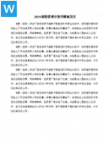
老师对六年级毕业赠言,通常是充满鼓励、感谢和期望的。以下是一些老师可能会使用的赠言示例: 1. **满怀希望的未来**: "毕业只是你人生旅程的一个小站,记住,你永远有无数个可能。带着梦想,勇敢前行,世界因为你的存在而更加精彩。" 2...
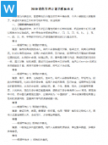
毕业季是学生们与老师、同学分别的时刻,也是情感交汇的节点。在这样一个重要的时期,老师通常会用饱含深情的话语为学生送上祝福和寄语,这些寄语不仅激励着学生走向未来,也成为了他们成长旅程中的宝贵回忆。以下是几则典型的毕业季老师寄语: 1. **追...
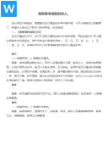
元宵节是中国传统节日,象征团圆、吉祥和幸福。以下是一些关于元宵节的四字祝福语,希望能够为您的节日增添一份温馨和喜庆: 1. 月圆人团圆 2. 灯火照九州 3. 万家灯火明 4. 花灯映春夜 5. 香甜元宵美 6. 合家欢乐日 7. 团圆赏明...
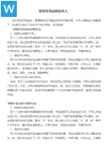
当然可以,以下是一些2021年元旦节日祝福语,您可以在庆祝这个新年的特殊日子时使用它们: 1. **新年新气象,祝您在新的一年里,一切顺意,心想事成!** 2. **愿2021年的第一缕阳光,带给你一年的好运和幸福。** 3. **新年新起...
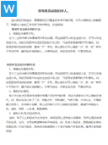
1. "晨光熹微,鸟语花香。" 2. "岁月静好,人间值得。" 3. "繁星点点,夜幕低垂。" 4. "书香满溢,智慧无边。" 5. "春暖花开,万物复苏。" 6. "月明星稀,静谧深邃。" 7. "秋风送爽,金黄满地。" 8. "雨后彩虹...
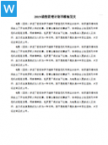
毕业季是一个充满离别、回忆和期待的时刻,以下是关于毕业季的多个朋友圈配文范例,希望能激发您的灵感: 1. "青春是一场盛大的宴会,现在,我们该准备启程,迎接属于我们的未来了。#毕业季#" 2. "回首那些年,我们一起奋斗的日子,笑容里满是回...
Copyright @ 好写作网 All Rights Reserved. 版权所有 粤ICP备2023147452号-1